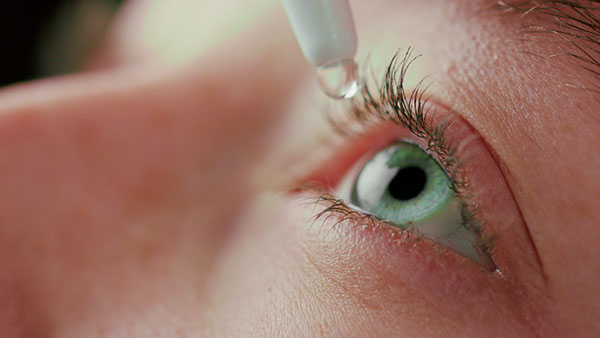Infrared contact lenses grant superhuman night vision – EVEN WITH EYES CLOSED
07/12/2025 / By Lance D Johnson

Imagine closing your eyes yet still seeing clear as day—not through some Orwellian brain implant, but through a pair of harmless, nanoparticle-infused contact lenses. Thanks to groundbreaking research from neuroscientists and materials scientists, infrared-enabled contact lenses now grant wearers the ability to perceive darkness as light, revolutionizing night vision without bulky goggles or invasive procedures. Published in Cell, this innovation leverages light-converting nano-materials to penetrate human vision’s natural limitations, but not without stirring concerns over privacy, militarization, and surveillance misuse.
Key points:
- Researchers developed transparent contact lenses using nanoparticles that convert infrared light into visible wavelengths, enabling wearers to see in complete darkness—even with closed eyelids.
- The lenses require no external power, unlike conventional night-vision goggles, and allow simultaneous infrared and visible light perception.
- Early testing proved successful in both mice and humans, with enhanced infrared detection when eyes were closed due to reduced visible-light interference.
- Potential applications range from military ops and medical diagnostics to aiding the colorblind—but ethical dilemmas loom over surveillance and privacy breaches.
- Current prototypes only detect LED-projected infrared, but researchers aim to refine sensitivity for natural low-light environments, with consumer availability still years away.
The science behind night-vision contacts
The secret lies in up conversion nanoparticles embedded in bio-compatible polymers—the same material used in standard soft lenses. These nanoparticles absorb near-infrared light (800–1600 nm) and transform it into visible light (400–700 nm), effectively rendering darkness perceptible. Senior author Tian Xue, a neuroscientist at China’s University of Science and Technology, explains: “It’s totally clear-cut: without the lenses, subjects see nothing, but with them, they detect infrared flickering instantly.” Remarkably, closing eyelids boosts clarity, as infrared penetrates skin more efficiently than visible light.
In mice trials, lens-equipped subjects avoided infrared-lit areas, while brain scans confirmed activated visual centers. Human wearers decoded Morse-code-like signals and pinpointed infrared light direction, with trichromatic nanoparticles even differentiating wavelengths by color—808 nm as green, 980 nm as blue, and 1,532 nm as red. This opens avenues for aiding colorblind individuals by transposing invisible hues into discernible shades.
Military dreams and civilian nightmares
The applications are staggering: soldiers navigating pitch-black battlegrounds, surgeons identifying infrared-tagged tumors, or rescue teams locating heat signatures in rubble. Xue touts “immediate uses in security, anti-counterfeiting, and encrypted communications.” Yet, history warns of dual-use technologies—thermal imaging, once military-exclusive, now fuels dystopian surveillance. Could these lenses become tools for corporate espionage or government overreach?
Unlike night-vision goggles, which emit telltale glows and restrict peripheral awareness, the contacts’ transparency makes covert monitoring disturbingly plausible. Unlike retinal implants, they’re noninvasive—yet equally potent. Bruce Schneier, a Harvard privacy scholar, cautions: “Any tech enhancing vision in darkness inherently risks abuse. The question isn’t if but how authorities will exploit it.”
Limitations and future horizons
While current incarnations of these augmented reality (AR) lenses are groundbreaking, they do come with notable limitations. Presently, they can detect only active infrared sources—such as LEDs—meaning ambient heat signatures or low-light environmental cues remain invisible. However, Xue’s research team is actively working to enhance sensor sensitivity, aiming to enable passive detection of weak thermal signals while simultaneously refining image resolution for clearer, more detailed projections.
Early-stage wearable prototypes already demonstrate promising synergies between AR glasses and smart contact lenses, offering improved image sharpness through hybrid configurations. Nevertheless, widespread consumer adoption remains years away, hindered by stringent safety validations, manufacturing scalability, and unresolved cost structures. Though exact pricing hasn’t been disclosed, early adopters should anticipate premium costs—similar to the steep introductory prices of first-generation smart glasses.
Beyond technical hurdles lies a broader societal debate: Will AR lenses serve as assistive tools for the visually impaired, or could they enable intrusive surveillance? The technology itself is impartial—its ethical implications will hinge entirely on application. Transparency in development, equitable access policies, and regulatory oversight will all play pivotal roles in ensuring these innovations uplift rather than undermine privacy. The road ahead is equal parts exhilarating and cautionary—demanding both scientific ingenuity and responsible stewardship.
Sources include:
Submit a correction >>
Tagged Under:
anti-counterfeiting, colorblind assistance, dual-use technology, emerging technology, ethics in tech, human enhancement, infrared contact lenses, medical innovation, military applications, nanomaterials, neuroscience, neurotechnology, night vision, optoelectronics, photonics, privacy concerns, superhuman vision, surveillance, thermal imaging, wearable devices
This article may contain statements that reflect the opinion of the author
RECENT NEWS & ARTICLES
COPYRIGHT © 2018 MILITARYTECH.NEWS
All content posted on this site is protected under Free Speech. MilitaryTech.news is not responsible for content written by contributing authors. The information on this site is provided for educational and entertainment purposes only. It is not intended as a substitute for professional advice of any kind. MilitaryTech.news assumes no responsibility for the use or misuse of this material. All trademarks, registered trademarks and service marks mentioned on this site are the property of their respective owners.




















